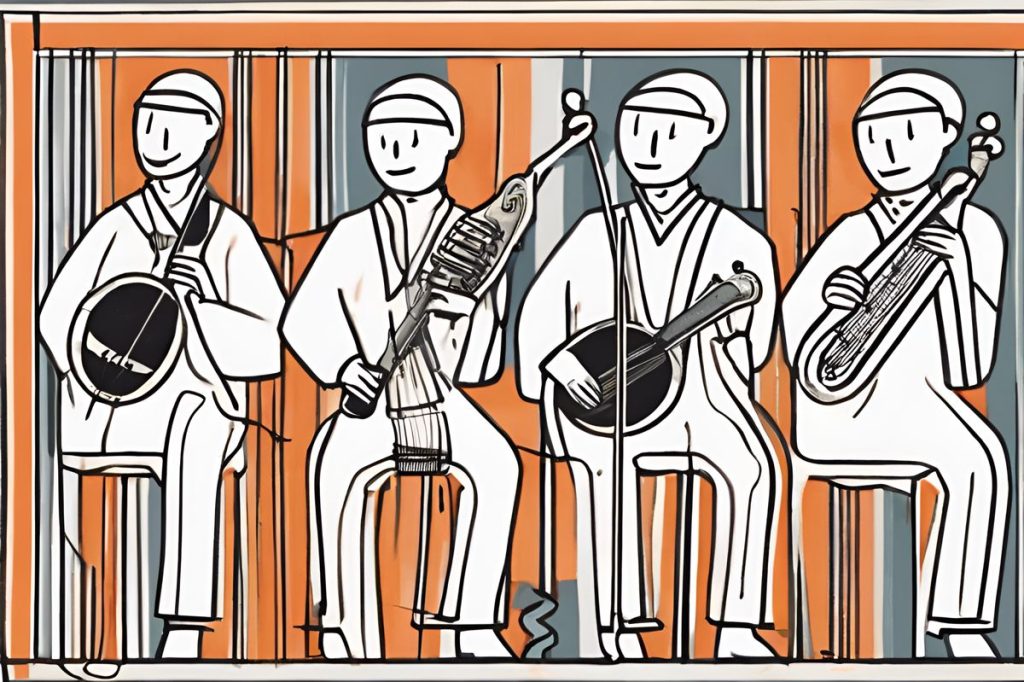The Sibil•la Ensemble, led by Kristia Michael, celebrates the historical music of Cyprus by blending ancient, medieval, and traditional melodies influenced by Eastern Mediterranean and Western cultures. Using a mix of historical and contemporary instruments, they create a unique auditory experience that resonates across time, bringing the island’s rich musical history to life.
What is the Sibil•la Ensemble and their musical mission?
The Sibil•la Ensemble, led by Kristia Michael, revives and celebrates the historical music of Cyprus. They blend ancient, medieval, and traditional melodies, influenced by Eastern Mediterranean and Western cultures, using historical and contemporary instruments to create a unique auditory experience that resonates across time.
A Fusion of Historical Melodies
The Sibil•la Ensemble has embarked on a fascinating journey, intertwining the ancient, medieval, and traditional music strands of Cyprus. At the helm is Kristia Michael, founder and artistic director, whose Cypriot heritage deeply influences the group’s exploration of the island’s multifaceted musical history. Cyprus, a cultural crossroads, has been a melting pot of Eastern Mediterranean and Western influences since the Bronze Age. This rich tapestry of civilizations has inspired an array of musical compositions that the Sibil•la Ensemble seeks to resurrect and celebrate.
The ensemble’s connection to the historical Sibyls – renowned female prophetesses of antiquity – is at the core of their musical selection. These figures, celebrated for their divinatory arts, were deeply connected to the spiritual life of the Mediterranean, including Cyprus. The group’s performances aim to bring this ancient practice to life, drawing audiences back to a time when music was an integral part of the island’s spiritual and cultural identity.
Selecting the Sounds of Centuries
In curating their performances, the Sibil•la Ensemble undertakes a meticulous selection process, aiming to represent the island’s history authentically. They delve into the island’s past, unearthing pieces that narrate Cyprus’s story from its earliest recorded music to the living oral traditions. Ancient rituals like the ‘Τραγούδι του Κλήδωνα’ are brought to the stage, representing divinatory practices once widespread across the island.
The ensemble also highlights the significant impact of the French Lusignan dynasty on Cypriot music. Pieces from the Codex of Cyprus, including Gregorian chants and secular polyphonic music, showcase the rich cultural exchange of the time. Furthermore, the ensemble honors the Renaissance with ‘Ὁ Πόθος εἰς δυὸ χείλη κουρελλένα’, a madrigal by Giandomenico Martoretta, reminding us of the island’s place in the broader narrative of Western music history.
Harmonizing the Old with the New
The Sibil•la Ensemble doesn’t just focus on selecting historic pieces; they also face the challenge of authentically rendering the music using a mix of historical and traditional instruments. The Renaissance lute, recorders, and clavichord create an auditory bridge to the past, while the lyre and percussion root the music in Cypriot tradition. Performing with this array of instruments, the musicians of the Sibil•la Ensemble not only reconstruct historical sounds but also infuse them with a contemporary freshness that resonates with modern audiences.
The fusion of these diverse instruments in a live performance captures the essence of medieval and Renaissance times when such blendings were common. Through this musical synthesis, the Sibil•la Ensemble offers a unique auditory experience that reflects the island’s historical soundscape.
A Journey Through Time
Through their performances, the Sibil•la Ensemble invites audiences on a musical voyage across the epochs of Cyprus. This immersive experience is more than a concert; it’s an opportunity to engage with the island’s cultural history. The ensemble hopes that listeners will be inspired to explore their heritage and gain a deeper appreciation for the historical influences that have shaped Cypriot music. By bringing ancient and medieval melodies to life, they offer a window into the past that remains relevant and enlightening for contemporary society.
What is the mission of the Sibil•la Ensemble in music?
The Sibil•la Ensemble, led by Kristia Michael, aims to revive and celebrate the historical music of Cyprus. They blend ancient, medieval, and traditional melodies influenced by Eastern Mediterranean and Western cultures, using a mix of historical and contemporary instruments to create a unique auditory experience that resonates across time.
How does the Sibil•la Ensemble select the music for their performances?
In curating their performances, the Sibil•la Ensemble undertakes a meticulous selection process to authentically represent Cyprus’s musical history. They delve into the island’s past, unearthing pieces that narrate its story from the earliest recorded music to living oral traditions. They highlight the impact of historical events, such as the French Lusignan dynasty, by showcasing pieces from the Codex of Cyprus, including Gregorian chants and secular polyphonic music.
What instruments are used by the Sibil•la Ensemble to recreate historical sounds?
The Sibil•la Ensemble uses a mix of historical and traditional instruments to authentically render the music of Cyprus. Instruments like the Renaissance lute, recorders, and clavichord create an auditory bridge to the past, while the lyre and percussion root the music in Cypriot tradition. By fusing these diverse instruments in live performances, the ensemble captures the essence of medieval and Renaissance times.
How does the Sibil•la Ensemble’s performances offer a journey through time?
Through their performances, the Sibil•la Ensemble invites audiences on a musical voyage across the epochs of Cyprus. This immersive experience goes beyond a concert, providing an opportunity to engage with the island’s cultural history. By bringing ancient and medieval melodies to life, the ensemble offers a window into the past that remains relevant and enlightening for contemporary society.

